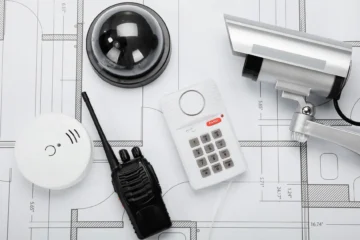Substance use disorders (SUDs) are complex conditions that can significantly impact individuals, families, and communities. Understanding SUDs, recognizing their signs and symptoms, and exploring potential solutions is vital for anyone dealing with these issues or supporting someone who is. This comprehensive guide aims to demystify substance use disorders and offer actionable insights for recovery and support.
What Is a Substance Use Disorder?
Substance use disorder is a medical condition characterized by an individual’s inability to control their use of legal or illegal substances, leading to significant impairment or distress. SUDs can involve substances such as alcohol, prescription medications, or illicit drugs. They are often marked by cravings, compulsive use, and withdrawal symptoms when the substance is not available.
Types of Substances Commonly Associated with SUDs:
- Alcohol
- Cannabis
- Cocaine
- Heroin
- Prescription opioids
- Methamphetamines
Recognizing the Signs of Substance Use Disorders
Identifying SUDs early can facilitate timely intervention and support. The following signs may indicate a problem:
Behavioral Signs:
- Changes in Social Circles: Isolating from friends and family or associating with new groups that encourage substance use.
- Neglecting Responsibilities: Failing to meet obligations at work, school, or home due to substance use.
- Risky Behaviors: Engaging in dangerous activities, such as driving under the influence or using substances in hazardous situations.
Physical Signs:
- Changes in Appearance: Neglecting personal hygiene, sudden weight loss or gain, and noticeable changes in physical health.
- Withdrawal Symptoms: Experiencing physical symptoms when not using the substance, such as nausea, sweating, shaking, or irritability.
- Increased Tolerance: Needing larger amounts of the substance to achieve the same effect.
Psychological Signs:
- Mood Swings: Experiencing extreme changes in mood, such as anxiety, depression, or irritability.
- Cognitive Impairment: Struggling with memory, attention, or decision-making abilities.
- Obsessive Thoughts: Frequently thinking about using the substance, planning to use it, or feeling a strong urge to use it.
Symptoms of Substance Use Disorders
The symptoms of SUDs can vary based on the substance used and the individual’s personal circumstances. However, the following criteria are commonly used to assess the severity of a substance use disorder:
- Using Larger Amounts: Consuming more of the substance than intended or for a longer duration than planned.
- Unsuccessful Attempts to Cut Down: Expressing a desire to stop or reduce use but being unable to do so.
- Spending Excessive Time: Investing significant time obtaining, using, or recovering from the substance.
- Neglecting Activities: Losing interest in hobbies or activities once enjoyed due to substance use.
- Continued Use Despite Harm: Persisting in using the substance even when aware of the negative consequences on health, relationships, or responsibilities.
Solutions for Substance Use Disorders
If you or someone you know is struggling with a substance use disorder, know that help is available. Here are some effective solutions for recovery:
1. Seek Professional Help
- Therapists and Counselors: Mental health professionals specializing in addiction can provide valuable support and guidance.
- Rehabilitation Centers: Facilities like https://www.urbanrecovery.com/ offer structured programs that address physical and psychological aspects of recovery.
- Medical Intervention: For some individuals, medications can help manage withdrawal symptoms and cravings.
2. Build a Support Network
- Family and Friends: Surround yourself with supportive individuals who can encourage and motivate you through the recovery process.
- Support Groups: Organizations such as Alcoholics Anonymous (AA) or Narcotics Anonymous (NA) provide a community of individuals facing similar challenges.
3. Educate Yourself and Others
Understanding substance use disorders can foster empathy and reduce stigma. Share information with friends and family to promote awareness and understanding.
4. Focus on Healthy Coping Mechanisms
Developing healthier coping strategies can replace the use of substances for dealing with stress, anxiety, or other emotional challenges. Consider:
- Physical Activity: Regular exercise can improve mood and reduce stress.
- Mindfulness and Meditation: These practices can enhance self-awareness and help manage cravings.
- Hobbies and Interests: Engaging in creative or fulfilling activities can provide a sense of purpose and joy.
5. Create a Relapse Prevention Plan
Relapse is common in recovery, but having a plan can help manage triggers and cravings. Consider:
- Identifying Triggers: Recognize situations, people, or emotions that lead to substance use and develop strategies to avoid or cope with them.
- Emergency Contacts: Keep a list of supportive individuals you can reach out to during moments of temptation or crisis.
- Set Goals: Establish short-term and long-term recovery goals to maintain motivation and track progress.
6. Take Care of Your Overall Well-Being
Maintaining a balanced lifestyle can support recovery efforts. Focus on:
- Nutrition: A healthy diet can improve physical and mental health.
- Sleep: Prioritizing rest can enhance mood and cognitive function.
- Routine: Establishing a daily routine can provide stability and structure.
Conclusion
Understanding substance use disorders is crucial for individuals and families affected by these challenges. By recognizing the signs and symptoms of SUDs and exploring effective solutions, you can take the first steps toward recovery or support someone else on their journey. Remember, recovery is possible, and no one has to face these struggles alone. Reach out for help, stay informed, and foster a supportive community to promote healing and hope.




